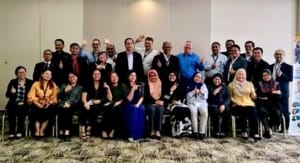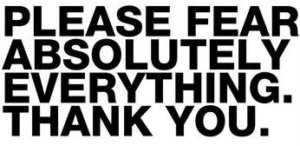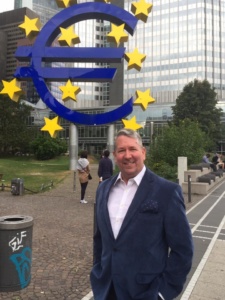If you want to conduct a Customer Experience Mystery Shopper there are some do’s and don’ts you need to know.
A Customer Experience based Mystery Shopper program involves a lot more than just tacking on the phrase ‘Customer Experience’ in front of ‘Mystery Shopper’.
The Customer Experience Mystery Shopper Award
Some time back one of the local Awards Clubs introduced a Customer Experience Mystery Shopper Award into its portfolio.
 Organizations could apply for the Mystery Shopper program and potentially win an award.
Organizations could apply for the Mystery Shopper program and potentially win an award.
Cool I thought – it would be interesting to see what a Customer experience-based Mystery Shopper Award looks like as per a global Mystery Shopper provider.
I got my wish
A short time later, I was helping a hospitality Client set up their Quality Assurance program.
A group of 20 senior folks were gathered around a conference table and we talking about how to select & define quality standards.
Then the head stopped and asked –
Hey Dan – did you know that we entered the Customer Experience Mystery Shopper Award this past year?
No I said – how did it go?
Well – we aren’t so sure. Because in this workshop I’m getting a sense of the complexity that goes into setting & measuring quality – but I’m not so sure it was this rigorous in our Awards entry.
He continued…
I have the final report from the Mystery Shopper provider here on my laptop – can we flash it up and talk about it?
But of course!
 The cover slide whirred up on the screen.
The cover slide whirred up on the screen.
Opening slide – very formal – The Customer Experience Mystery Shopper Report.
We were all ready. And then, next slide…
THE GREETING – score 98%
What? The Greeting? Oh – ok. Hmmm. Anyway 98%.
GET THE CUSTOMER NAME – score 97%
Oh…really? This is a Customer Experience Mystery Shopper?
And it carried on from there.
Slide after slide after slide reported a compliance measurement.
Even the Hold Technique was featured.
As we hit slide 20+ someone in the room turned to me and said – So Dan — you look a bit pale – what do you think?
Well it was an easy question to answer.
Well guys.
What you have here is a wonderfully presented compliance report – but I haven’t seen anything yet that even remotely measures or talks about the Customer experience.
And the room agreed.
Finally ‘Customer Experience’ appeared
As we carried on viewing the deck, there was a final measurement slide that said CUSTOMER EXPERIENCE. It was a single slide.
Score – 58%.
But the legend was unclear as to how the score was derived. That started a lively conversation – where did 58% come from?
We guessed that perhaps this was the personal score or viewpoint of the Mystery Shopper.
If so that’s a big issue.
Because Mystery Shoppers aren’t real Customers. Once you pay and instruct someone to execute a certain scenario they’re not a real Customer.
Sure – their personal opinions can be a source of insight.
But one slide with the opinion of the Mystery Shopper is not a Customer Experience Mystery Shopper program.
There’s a lot of valid compliance-based Mystery Shopper work
Let’s put something on the table right now.
If the first thing that comes to your mind when planning a Customer Experience Mystery Shopper program is THE GREETING – then you’re on the wrong track.
But there are certainly valid reasons to conduct compliance-based Mystery Shopper.
 They’re used extensively in the banking & finance industry.
They’re used extensively in the banking & finance industry.
Especially for ensuring regulatory compliance.
In the Public Sector, compliance-based programs provide a basic ‘minimum-standard’ dipstick.
 While it’s rare to see a Public Sector program skew heavily to the Customer experience compliance based programs ensure a level of essential service is provided.
While it’s rare to see a Public Sector program skew heavily to the Customer experience compliance based programs ensure a level of essential service is provided.
Another example of a smart compliance program is ensuring that things work the way they are supposed to work.
 That when a certain telephone number is dialed at a certain time of day – that the call goes to the right place.
That when a certain telephone number is dialed at a certain time of day – that the call goes to the right place.
You’d be surprised how many times it doesn’t.
Or when a certain set of IVR options or digital instructions are followed, that the Customer ends up where they were supposed to.
As channels proliferate and overlap, it’s important to ensure that channel mechanisms work the way they are supposed to.
I sometimes call these the Omni-channel Mystery Shopper program.
So what does a Customer Experience Mystery Shopper look like?
There is no one single model – that’s the beauty of deep dive research – and we share a few models here from our work with innovative Clients.
Let’s start the discussion with brand
Colin Shaw of Beyond Philosophy says that a brand is perception – nothing more, nothing less.
It’s what you think and feel about that company. An opinion, a viewpoint, an expectation.
So the Customer experience is the journey the Customer has with your brand.
When you look at it like that – then opening the Mystery Shopper conversation with a brand discussion makes a lot of sense.
If your brand proposition incorporates things like trust, accuracy or ownership – then these values can be codified and studied during the Mystery Shopper journey.
Then the gaps between the brand and the Customer experience can be identified.
One of our favorite brand-based programs
 One of our favorite Customer Experience Mystery Shopper programs was with a high end hotel.
One of our favorite Customer Experience Mystery Shopper programs was with a high end hotel.
The GM & Team wanted to focus exclusively on brand values.
So we designed everything to effectively measure the success in bringing brand values to life.
All the scenarios were designed around brand values. And rather than scores we documented the measures of success.
I share this example in many of my talks and workshops on Customer experience.
The study of emotion is a must
One of my favorite things about the rise of Customer Experience is the inclusion of emotion in business discussions.
For too long, Customers – and Employees – have been discussed as batches or ‘segments’ that are expected to behave and perform in certain ways.
If they follow ‘your rules’ – then they can get what they want or what they need.
But if you read any established Customer experience authority you’ll note how quickly the topic of emotion comes up.
Bruce Temkin argues that more than 50% of the Customer experience is driven by emotion.
So in our work designing Customer Experience Mystery Shopper programs we always talk about emotions.
 If you don’t know what emotions you are trying to evoke – how will your Frontliners know?
If you don’t know what emotions you are trying to evoke – how will your Frontliners know?
Testing emotion is one of the best things you can do in a Customer Experience Mystery Shopper program.
We like The Diary approach to recording thoughts & feelings
For a well known theme park, we conducted a series of lengthy (6 – 8 hour) Mystery Shopper visits that incorporated thoughts & feelings.
Structured in a diary format and supported by photographs, each final report was quite lengthy.
After each visit we were able to boil down observations across the journey into a number of themes.
We then cross referenced all the themes across all the visits.
Mystery Shopper research is a deep dive qualitative research methodology – and lends itself beautifully to this kind of study.
The report became legendary and we still have company management write to us now and then on how useful the approach had been for them.
There are 3 aspects to a Customer Experience
Forrester teaches a very useful way to look at ‘a’ or ‘the’ Customer Experience.
Is the experience ‘effective’ – i.e. does the job get done. Examples could be opening a bank account, making an insurance claim, getting tech support, hiring a venue for an event.
Is the experience ‘easy’ – how much work did the Customer have to put in to get their solution. Examples include being transferred around, repeating needs multiple times, having to visit multiple channels to get help.
Is the experience ’emotional’ (in the right way of course) – did the Customer leave feeling respected, relieved or reassured?
We’ve found that designing Mystery Shopper work around the 3 ‘E’s to be very helpful in stimulating dialogue and insight.
At the very minimum
At the very minimum – if you are ready to use Mystery Shopper as a Customer experience tool, consider upgrading your measurements beyond compliance standards.
Sure – compliance standards are easy to measure.
But they have very little to tell you with regard to the thoughts, emotions, ease and ‘success’ of the experience.
Adding the phrase ‘Customer Experience’ to something doesn’t make it so.
Thank you for reading!
Daniel Ord and Marcus von Kloeden




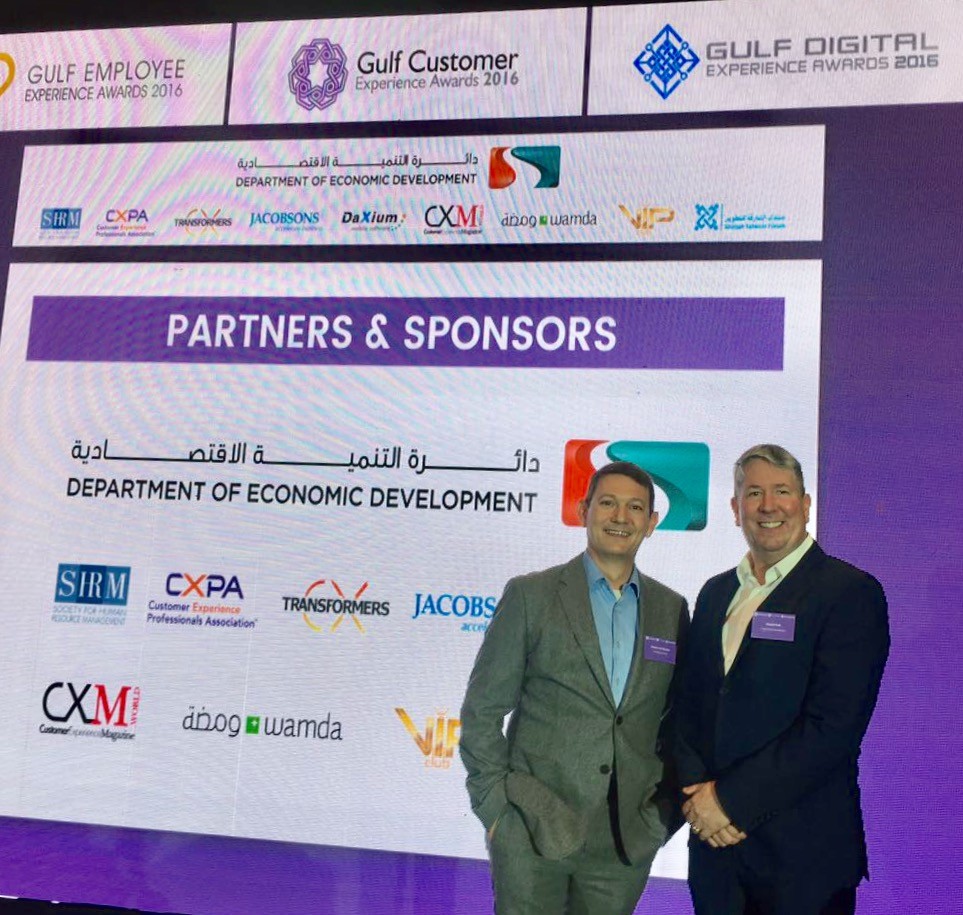




















 That’s always one of the great things about participating at an Awards event.
That’s always one of the great things about participating at an Awards event. There were 3 key complaint handling practices that I picked up from interacting with all the Complaint Handling Teams.
There were 3 key complaint handling practices that I picked up from interacting with all the Complaint Handling Teams. Their strategic purpose was clear – to understand their Voice of the Customer.
Their strategic purpose was clear – to understand their Voice of the Customer. Equipped with the results of their analyses, the Complaint Handling Team went to their Management to propose changes to processes or rules that caused Customer discomfort.
Equipped with the results of their analyses, the Complaint Handling Team went to their Management to propose changes to processes or rules that caused Customer discomfort.
 Interestingly, many complaints stemmed from questions about bills and statements.
Interestingly, many complaints stemmed from questions about bills and statements. The Customer gets either one point of contact to deal with them all the way through.
The Customer gets either one point of contact to deal with them all the way through. All the Complaint Handling Teams were able to demonstrate a financial ROI to back up their work.
All the Complaint Handling Teams were able to demonstrate a financial ROI to back up their work.








 Daniel
Daniel




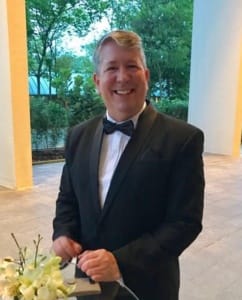

 To solve that question requires courage.
To solve that question requires courage. The best Service Quality Managers are also inspiring people.
The best Service Quality Managers are also inspiring people. Mystery Shopper program, or Wave 23 of their Customer Satisfaction survey program.
Mystery Shopper program, or Wave 23 of their Customer Satisfaction survey program.

 Rather than receiving a reply within 2 – 3 days, reply time-frames ranged from one week to no reply received within the time-frame promised.
Rather than receiving a reply within 2 – 3 days, reply time-frames ranged from one week to no reply received within the time-frame promised.


